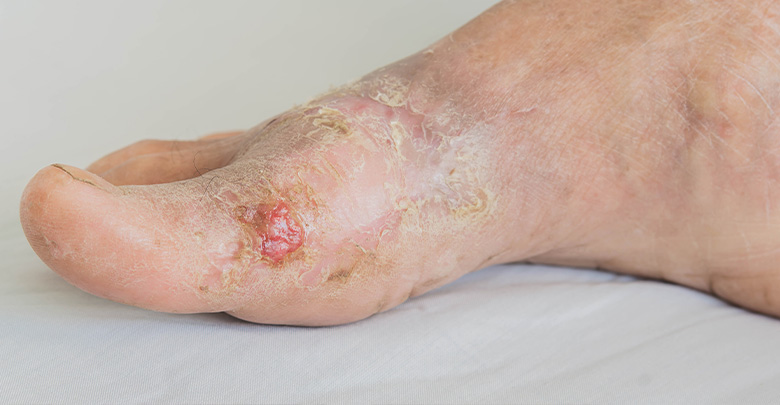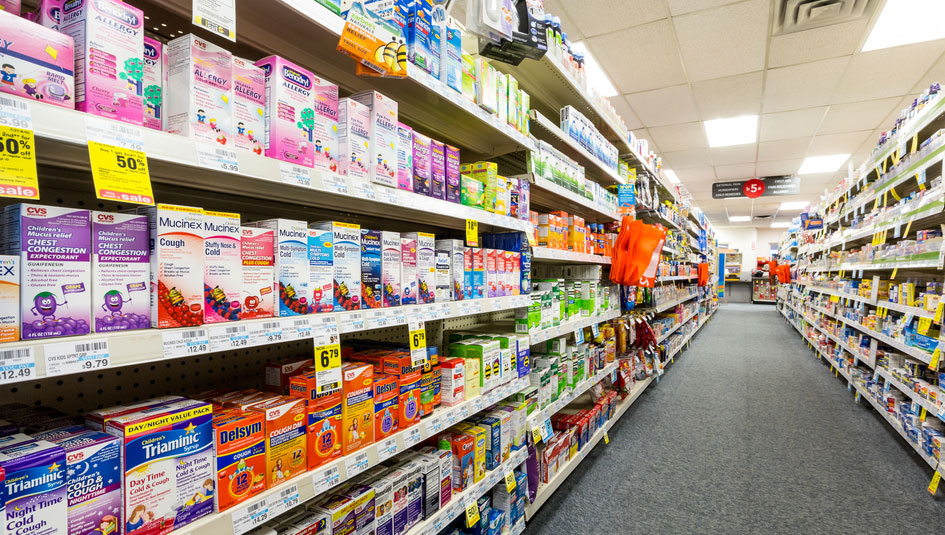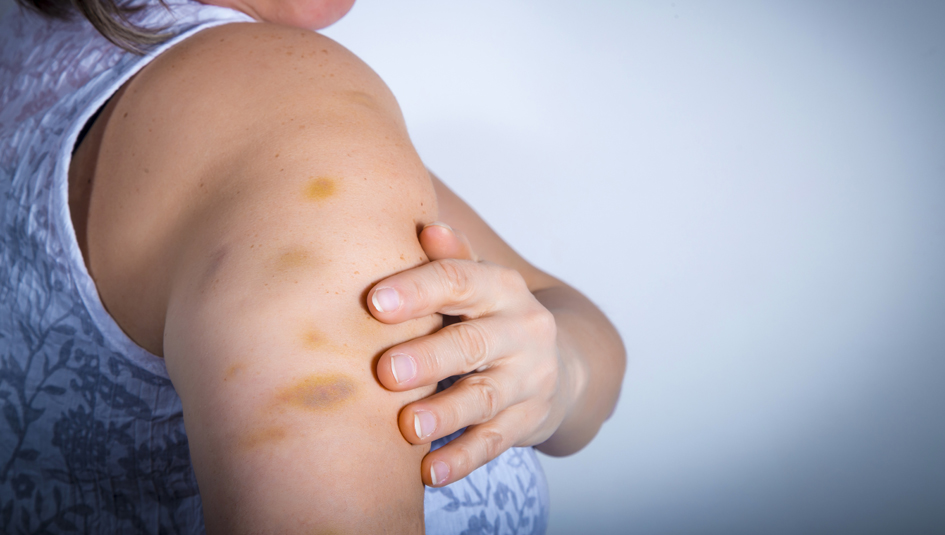High Blood Sugars & Your Skin
Your skin is damaged when your blood sugar is high eventually resulting in itchiness, discolorations/spots, infections, blisters/sores, and sclerosis

A little-discussed side-effect of high blood sugars is how it affects your skin. Often subtle at first, consistently high blood sugar levels can wreak havoc on your skin health, leading to a number of very uncomfortable conditions.
Skin issues can actually be the first symptom of undiagnosed type 2 diabetes.
Your primary care provider may refer you to a dermatologist for a skin issue, and the dermatologist will eventually identify it as a result of high blood sugar levels.
For some already diagnosed with type 2 diabetes, itchy skin can be a tell-tale sign that your blood sugars are suddenly running very high during a particular day or week. The itchy symptoms dissipate when you get things managed again, and then when things spike again after skipping medications for a few days or indulging in carb-laden treats, the itchiness returns.
Let’s take a closer look at the impact of high blood sugars on your skin.
How high blood sugars threaten your skin
There isn’t a single part of your body that high blood sugar does not threaten — including your fingers, toes, eyes, kidneys, stomach, and your skin!
Your skin is full of tiny blood vessels, and those blood vessels rely on healthy amounts of glucose in order to stay healthy.
When blood sugar levels are consistently high, you’re creating an ideal environment for ongoing damage to your skin, which can result in a number of very serious skin diseases and conditions.
Fortunately, most of these skin conditions are very preventable with healthy blood sugar management. And for the ones you’ve already developed, you can either cure it or prevent it from worsening by working with your healthcare team to adjust your diabetes management plan and improve your blood sugars.
Common skin issues from diabetes / high blood sugar
These skin issues should be taken very seriously. All of these conditions indicate something else in your health is very out of balance — most likely your blood sugar levels.
- General itchiness: High blood sugars contribute to this through dehydration and poor circulation. In addition to improving your blood sugars, the American Diabetes Association (ADA) suggests avoiding long or frequent baths, which dry out your skin. And using all-natural fragrance-free soaps and moisturizers.
- Acanthosis Nigricans: One of the most common skin conditions, this looks like brown areas of skin in your groin, armpits, neck, hands, elbows, or knees. It’s common in people who are overweight, too, even if they don’t have diabetes. The best treatment is to lose weight and improve your blood sugar levels.
- Bacterial infections: People with diabetes have a greater risk of developing a bacterial infection in their skin because high blood sugar levels impair your body’s ability to protect itself and heal. If you have an area of skin that is hot, swollen, red, painful, and possibly oozing pus, visit your urgent care immediately for antibiotic treatment. Bacterial infections left untreated can quickly threaten amputation or death.
- Bullosis Diabeticorum: Often referred to as “diabetic blisters,” these are the direct result of long-term high blood sugar levels. While they are large, they’re usually not painful but they will not go away until you improve your blood sugars. They can also become infected if left untreated.
- Necrobiosis Lipoidica: This condition is the result of long-term blood vessel damage — which is caused by consistently high blood sugar levels. Women are more prone to this, according to the ADA. There isn’t much treatment for it beyond improving your blood sugars, but if you develop sores that break open, you should visit your doctor immediately to prevent further infection.
- Diabetic Dermopathy: Often misdiagnosed as an “age spot,” this condition is also caused by blood vessel damage and high blood sugar levels. It’s generally harmless but left untreated, it will get worse and become more present all over your body. There is no treatment beyond improving your blood sugars immediately.
- Eruptive Xanthomatosis: Also the result of consistently high blood sugar levels, this condition is very visible with yellow and green bumps all over your hands, feet, arms, and legs. Improving your blood sugars is the only treatment!
- Digital Sclerosis: This skin condition can actually stiffen your joints by making your skin severely stiff and tight (and shiny). The only treatment is to improve your blood sugar levels.
- Disseminated Granuloma Annulare: Appearing like a ring or arc-shaped rash, this skin condition is a rash that shows up on your hands and feet. It can be treated with steroids if it’s severe enough, but improving your blood sugars is the only way to prevent it from worsening.
- Fungal infections: Yeast infections are most common in the vagina, but people who are severely overweight can also develop yeast and other types of fungal infections in the folds of your skin — between your breasts, between fingers and toes, in your armpits, between belly fat rolls, and in the groin area. They can be very uncomfortable. The treatment is a combination of antifungal medication (over-the-counter or prescription-strength from your doctor), losing weight if necessary, and improving your blood sugar levels.
If you ignore any of these skin conditions, many can lead to an infection that threatens your entire foot, leg, finger, or hand. While it can be embarrassing to discuss unpleasant skin issues with your healthcare team, it’s imperative that you address any signs and symptoms as soon as possible.
Tips for healthy skin-care for people with diabetes
Caring for your skin is, unfortunately, another item on the diabetes to-do list. But it’s important! Here are 5 tips for daily skin-care to prevent and manage diabetes skin issues.
- Improve your blood sugar levels. This one is a no-brainer. Work with your healthcare team to look more closely at your current diabetes management regimen. You may need to try a different type of medication or increase the dose in existing medication. Either way, your health is worth it!
- Consider changing your underwear, shirts, socks more often if you are prone to sweating. The dryer you can keep your skin, the happier it will be, and the more you will protect your skin from developing these conditions.
- Turn down the temperature in your shower or bath. Hot water can severely dry out and damage your skin, so for people with diabetes, this is an easy one to fix. Turn down the temp! Aim for warm, not hot.
- Avoid soaps and lotions with fragrances or color dyes. The more natural your skin-care products are, the better they are for your skin! Period.
- Address cuts and blisters quickly. A simple cut or blister in a person with high blood sugars can struggle to heal and become easily infected. If you suspect an infection or a cut that’s struggling to heal, visit urgent care immediately! Infections can spread quickly. Do not wait. See Foot Ulcers article.
Like every other part of your body, your skin relies on healthy blood sugar levels.
You need your skin!
Don’t take it for granted — work with your healthcare team to improve your blood sugar levels sooner than later for your long-term skin health.





